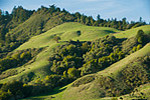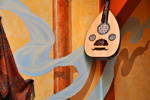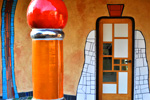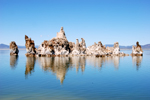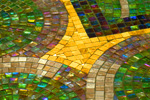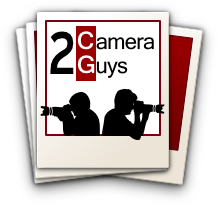Best entry-level DSLR Cameras
- Shootout
- Canon Rebel T2i
- Nikon D3200
- Nikon D3100
- Pentax K-r
- Canon T3
- Advice and Conclusion
First Place
Canon Rebel T2i
Canon's T2i is a do-it-all beginner DSLR. Certain features, like the input jack for an external microphone and the 3:2 aspect ratio rear screen, are not found anywhere else. Others, like 1080p video, are only found on select few cameras. Solid low-light performance and super high resolution make the T2i a no-brainer for anyone getting serious about still photography or videography.
Pros:
- High-quality pictures
- 18 megapixels make for some very large prints
- Excellent movie capabilities
- 3:2 high-resolution rear LCD
- Natural control layout, solid build
Cons:
- Auto White Balance is often wrong
- Costs more than some other DSLRs
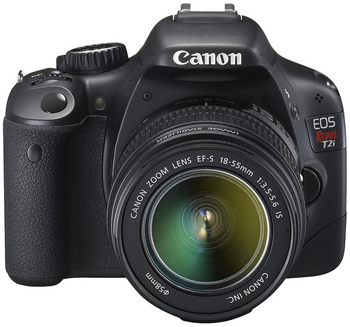
The Good
Image quality. Let's get something straight up front -- when you get to this level of camera, the differences in image quality fade away to near-insignificance. In fact, our advice in general would be to base your DSLR purchase on other factors, such as control layout and the features you need. At this level of performance, picture quality is such a small thing that it is barely worth thinking about.
Still, when you look at the images from the T2i next to samples of the same scene from the D3100, you'll notice a slightly more refined look to the T2i's photos. Lines appear smoother, text is more legible, and colors are more accurate. Sharpness pops a bit more, too. Some will say that this is because Nikon chronically under-sharpens images from their DSLR cameras, which has some merit; my personal D200 exhibits the same behavior. However, for a beginner, the camera that produces better images without post-processing is more preferable. Post-processing can be an enjoyable and rewarding part of image-making, but being forced to fiddle with your images after the fact is not and never will be fun.
High resolution. You may have noticed that 2CameraGuys does not think too highly of megapixels, especially as a rubric for camera quality. Too often, consumers fall into the trap of thinking that more equals better, and megapixel count is an easily-referenced number that sales reps just love to push.
Well, here's the real story: megapixels only matter when you are making prints, and then only when you are making big prints; any camera produced in the last ten years will print passable five-by-sevens. If you are printing larger than 8" x 10", megapixels might be useful. In this case, the T2i's 18 megapixels make it the front-runner for those seeking large prints.
Excellent video performance. The T2i is one of only two cameras in the shootout capable of taking full HD 1080p video, and it is the only camera in the shootout with a port for an external microphone. An external microphone is important because many on-camera microphones, in addition to being somewhat low quality, also capture the noise of the lens' focus motor and, occasionally, the sound of the user clicking the camera's buttons. You may know how infuriating it is to capture great video with a terrible audio track. If not, I hope you never find out.
Most DSLRs (and for that matter most other cameras too) have a limitation where the video image is captured line-by-line rather than all at once. This becomes a problem if you are filming something that moves very quickly, such as a propeller or fan, or pan the camera rapidly. This will cause what is called "rolling shutter," which can ruin a perfectly good video. Be aware of what you're filming and you should be fine.
Controls and build. The T2i has a good number of hard-wired controls, which allow the user to make adjustments without going into the camera's menu system. Point and shoot cameras can get away with menu-based adjustments simply because there are not a lot of adjustments to be made. On a DSLR, where almost everything is adjustable, this rapidly becomes unwieldy. The other perk, as mentioned previously, is the 3:2 aspect ratio screen (three units wide by two units tall). Most cameras have 4:3 aspect ratio screens, just like an old television, but DSLRs take pictures in the 3:2 aspect ratio. The 3:2 screen allows pictures to fill the whole screen without black bars at the top and bottom.
The camera itself is rock-solid, with rubber grip surfaces that make it easier to hold. The T2i has a good, solid weight to it -- it's not heavy, but it does not feel like a toy, either. There's also a sort of mental satisfaction that goes along with holding a solidly built camera, especially one that you've just spent $650 on. It makes you feel like you've received something worth your money.
The Bad
Auto White Balance. "White" is actually a whole spectrum of colors -- just look at the color of sunlight versus the color from a fluorescent lamp and you'll see what i mean. Auto white balance is the camera's attempt to determine the color of the light it is seeing and map that to its internal color processing correctly. Most cameras do a fair job at this, but the T2i showed some difficulty in this regard. This is more of a concern for beginners, who are likely to shoot JPEG as opposed to RAW if only due to convenience and comfort level. In a RAW file, white balance can be adjusted after the fact, but JPEGs are much less flexible.
Cost. While the T2i is the most fully-featured of the DSLRs up for review, it is also the most expensive, at $650. Since the T2i came out in 2010, you can find them on the used market quite easily, but if you want that new-camera experience (and warranty) you'll end up paying full price.
The Verdict
The Canon Rebel T2i is the most fully-featured and capable DSLR in this shootout, and it comes with a commensurately higher price tag as a result. It is not as newbie-friendly as the D3100, and the Pentax K-r bests it for fast action, but the T2i is a well-rounded and highly capable DSLR, especially when it comes to video.
In This Shootout:
Shootout
Canon Rebel T2i
Find out why the Canon Rebel T2i is the Best Entry-Level DSLR Camera
Nikon D3200
The Nikon D3200 is a close second for stills and video
Nikon D3100
The Nikon D3100 comes in third place
Pentax K-r
The K-r's fast continuous shooting make it a good option for sports and wildlife
Canon T3
The T3 is the most budget-friendly option, but comes up short on features
Advice and Conclusion
Some advice to first-time buyers of DSLR Cameras
